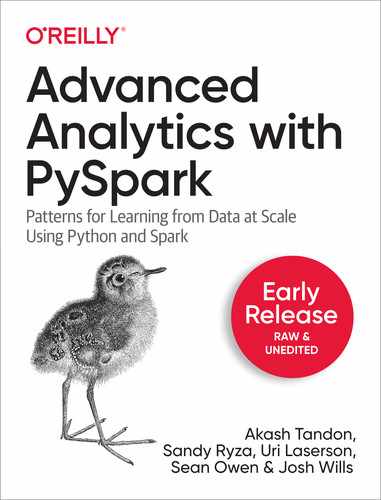The amount of data being generated today is staggering--and growing. Apache Spark has emerged as the de facto tool to analyze big data and is now a critical part of the data science toolbox. Updated for Spark 3.0, this practical guide brings together Spark, statistical methods, and real-world datasets to teach you how to approach analytics problems using PySpark, Spark's Python API, and other best practices in Spark programming. Data scientists Akash Tandon, Sandy Ryza, Uri Laserson, Sean Owen, and Josh Wills offer an introduction to the Spark ecosystem, then dive into patterns that apply common techniques--including classification, clustering, collaborative filtering, and anomaly detection--to fields such as genomics, security, and finance. This updated edition also covers NLP and image processing. If you have a basic understanding of machine learning and statistics and you program in Python, this book will get you started with large-scale data analysis.
Table of Contents
- 1. Analyzing Big Data
- 2. Introduction to Data Analysis with PySpark
- 3. Recommending Music and the Audioscrobbler Data Set
- 4. Predicting Forest Cover with Decision Trees
- 5. Anomaly Detection in Network Traffic with K-means Clustering
- 6. Estimating Financial Risk
- Terminology
- Methods for Calculating VaR
- Variance-Covariance
- Historical Simulation
- Monte Carlo Simulation
- Our Model
- Getting the Data
- Preprocessing
- Determining the Factor Weights
- Sampling
- The Multivariate Normal Distribution
- Running the Trials
- Visualizing the Distribution of Returns
- Evaluating Our Results
- Where to Go from Here
